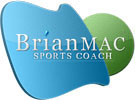

Healing Sports Injuries the Holistic Way
Sally Perkins looks at several holistic ways to heal some sports injuries.
Regular exercise is vital for optimal health. The NHS guidelines recommend at least 150 minutes of moderate aerobic activity per week and two or more strength training sessions. If you are an avid exerciser, you will likely know that none of us is immune to getting the occasional injury now and then. The most common sports injuries take the form of sore muscles, strains, and sprains. Fortunately, several holistic ways to heal sports injuries without taking meds exist. These methods include ice packs, bathing, massage, good nutrition, and plenty of rest.
Soothe sore muscles
Micro-tears in the muscle tissue ultimately cause sore muscles. 12 to 24 hours after the workout, delayed-onset muscle soreness (DOMS) sets in with symptoms including mild soreness, swelling, stiffness, limited range of motion in the affected joints, and loss of strength in the affected muscles. It is, in turn, the result of either not warming up well enough, increased exercise intensity, or increased exercise duration.
To soothe sore muscles and relieve symptoms of DOMS holistically, take a long, warm bath with Epsom salts and your favourite essential oils. Epsom salts break down into magnesium in warm water, relaxing and soothing the muscles. Adding essential oils will help reduce inflammation, improve blood circulation, and ease the pain.
You can also use massage with essential oils to alleviate muscle pain holistically. Massage releases lactic acid and other toxins from the muscles that cause muscle pain. Lemongrass, lavender, eucalyptus, frankincense, and cypress essential oils are beneficial. Mix a few drops with a carrier oil and gently massage the injured area. DOMS usually lasts two or three days, but these holistic methods should help it pass quickly.
Heal strains and sprains
A muscle strain results from overusing a muscle, which causes the muscle fibres to swell, spasm, or knot up. A strained muscle has a dull, ongoing throbbing pain that becomes sharper when you try putting weight on it. A sprain can result from an overused ligament, which ends up stretching and even tearing. It is excruciating and soon followed by tenderness and swelling.
Although different, strains and sprains are ultimately the result of inflammation that can be cured holistically. Firstly, an ice pack should be applied to the injured area immediately. Within the first 24 hours of the injury, you should ice it for 15 to 20 minutes every few hours. Do this at least three times per day for the next two (or more) days. Ice will help ease both pain and inflammation.
It also helps to eat foods rich in omega-3 to reduce inflammation (such as avocados, flaxseeds, and walnuts). A medicinal substance within the spice turmeric, Curcumin, is also a proven anti-inflammatory. You can add turmeric (root or dried) to soups and lentil dishes and use it to make nutritious vegetable juices and hot tea. The impressive thing about Curcumin is that research has shown it to be as effective as cortisone and the phenylbutazone drug. However, Curcumin is not toxic and is free from unwanted side effects, unlike these two compounds.
Lastly, rest your injury and avoid putting excess strain on it. Although it can be frustrating to skip a workout, you must allow your body to heal. You can then focus on taking steps to prevent injuring yourself again. Before your next workout, warm up all your muscles correctly, as well as cool down afterwards with stretches and a foam roller to massage your muscles.
Page Reference
If you quote information from this page in your work, then the reference for this page is:
- PERKINS, S. (2018) Healing Sports Injuries the Holistic Way [WWW] Available from: https://www.brianmac.co.uk/articles/article307.htm [Accessed
About the Author
Sally Perkins is a professional freelance writer with years of experience in many different areas. She moved to freelancing from a stressful corporate job and loved the work-life balance it offered her. When not at work, Sally enjoys reading, hiking, spending time with her family, and travelling as much as possible.